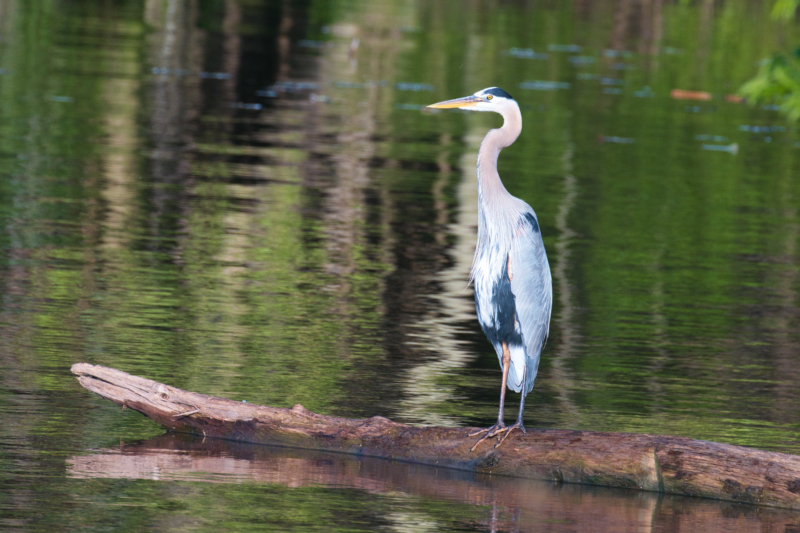On May 15th, I had the privilege of photographing a majestic Great Blue Heron at Sequoyah National Wildlife Refuge in Oklahoma. The heron was perched on a weathered log on the west side of the Tuff Boat Ramp, close to the refuge’s tour road. To avoid disturbing the bird, I parked my truck just east of its location and carefully framed the shot from the driver’s seat. The result was a serene and natural composition that highlighted the heron’s elegance.

Great Blue Herons always make rewarding photography subjects. Their stillness, sharp profiles, and graceful movements consistently create compelling shots, especially in serene environments like Sequoyah. In this case, the heron’s choice of a rugged log partially submerged in the water added an organic and natural element to the composition.
A Few Facts About Great Blue Herons:
- Size and Weight: The Great Blue Heron holds the title of the largest heron species in North America. Interestingly, despite their impressive size, they weigh only 5–6 pounds. Their hollow bones, like those of other birds, allow them to stay light enough for flight.
- History: In the 19th century, hunters targeted Great Blue Herons for their feathers. At the time, women frequently used these feathers to decorate hats, which unfortunately caused a decline in heron populations.
- Lifespan: The oldest documented Great Blue Heron in the wild lived 23 years. However, most live around 15 years under typical conditions.
- Behavior: Great Blue Herons remain most active during early mornings and at dusk. These times offer the best opportunities to observe them hunting for fish.
Great Blue Herons exemplify the beauty and resilience of wildlife. Therefore, their presence at the refuge highlights the importance of protecting habitats that allow them to thrive. Observing and photographing these birds not only provides a glimpse into their lives but also reminds us why conservation efforts matter. Moments like this emphasize the need to preserve spaces where nature flourishes.
